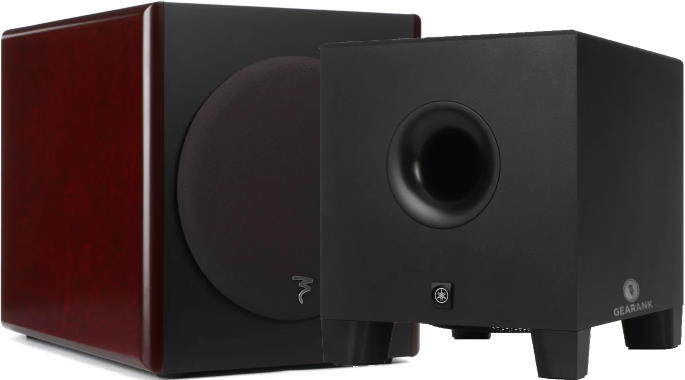
Disclosure
We recommend all products independently of 3rd parties including advertisers. We earn advertising fees from:
• • • • •

• • • • •
Amazon
As an Amazon Associate we earn from qualifying purchases.
• • • • •
Are you a music producer, sound engineer, or enthusiast seeking that thumping low-end for your studio setup?
Look no further! This comprehensive guide delves into the world of studio subwoofer monitors—the unsung heroes responsible for delivering those chest-rumbling bass frequencies.
Why Studio Subwoofers Matter
Studio subwoofers play a pivotal role in music production, ensuring accurate monitoring across the entire frequency spectrum.
Whether mixing tracks, mastering, or simply vibing to your favorite tunes, a well-chosen subwoofer can make all the difference.
Criteria for Selecting the Top Picks
Our expert panel meticulously evaluated a range of studio subwoofers based on the following key criteria:
- Crossover Frequency: A seamless blend between the subwoofer and studio monitors is crucial. We considered subwoofers with adjustable crossover points to tailor the integration to your specific setup.
- Frequency Response: The ability to reproduce low frequencies accurately is paramount. Our top picks boast extended frequency ranges, ensuring clarity even in the deepest bass regions.
- Power Rating: From modest home studios to professional setups, we’ve curated options that cater to various power requirements. Whether you need a gentle rumble or room-shaking bass, we’ve got you covered.
- Speaker Size: We’ve included subwoofers in different form factors, from compact to substantial, allowing you to choose based on available space and sonic preferences.
- Positioning Flexibility: Studio layout matters, and so does subwoofer placement. Our picks offer versatile positioning options—corner placement, near-field, or tucked under your desk—so you can optimize your listening environment.
Navigating the Guide
In the subsequent sections, we’ll explore the best studio subwoofers across various price ranges. From budget-friendly options to high-end performers, we’ve got something for every discerning ear.
So, whether you’re producing chart-topping hits or fine-tuning your podcast audio, join us on this bass-filled journey through the top studio subwoofer monitors of 2024.
The Best Studio Subwoofer Monitors – 2024
| Gearank* | SRC* | Check Price | ||||||
|---|---|---|---|---|---|---|---|---|
| Budget Option | ||||||||
 | PreSonus Eris Sub 8 | 92 | 650+ | |||||
| Under $1000 | ||||||||
 | KRK S10.4 | 95 | 200+ | |||||
 | Yamaha HS8S | 94 | 700+ | |||||
 | Genelec 7040A | 95 | 90+ | |||||
| Under $2000 | ||||||||
 | Focal Sub6 Red | 94 | 30+ | |||||
 | Neumann KH 750 | 94 | 90+ | |||||
Author & Contributors
Raphael Pulgar
I've been an audio engineer for 20 years specializing in rock and metal recordings. I also play guitar and produce original music for my band and other content creators.
Budget Option
PreSonus Eris Sub 8
Cons
- Doesn't have enough power to keep up with larger rooms
Pros
- Variable Cutoff helps synergy with different speakers
- Punchy transient response
- Compact size makes it great for smaller rooms
The Presonus Eris Sub 8 is a value priced subwoofer that was designed to complement their Eris line of studio monitors.
It features a Paper-composite Low-frequency Transducer with Rubber surround on the woofer and a front firing port for linearity.
A class AB power section with 100 Watts of power drives a moderately sized 8" woofer.
Variable cutoff from 50Hz to 130Hz helps synergize with various types of monitors; even outside the Eris range.
This value priced sub works great with their regular monitor speakers regardless of brand. The low end is relatively neutral with a punchy transient response. I used to own a unit myself and it melds well with both my Eris E4.5 monitors and my JBL LSR305 midfields.
One thing to note is that it might not keep up with louder studio monitors, depending on the size of your studio space. Being 100W prevents it from keeping up with larger rooms and louder speakers.
The PreSonus Eris Sub8 is a great, value priced sub that lets you get the most out of your monitor setup regardless of brand. The Eris retains that fast punch without going into overhyped low end sound system territory.
If you're looking for a linear, punchy sub for your small studio, this is the pick.
Specifications
- Frequency Response: 22 Hz to 150 Hz
- Crossover Frequency: Can be adjusted between 80 Hz and 120 Hz.
- Max SPL: Not Specified
- Power Rating: 100W Peak Class AB
- Driver: 8"
- Input Connectors: 2 x 1/4" (left/right) , 1 x Dual RCA Jacks (Stereo)
- Output Connectors: 2 x 1/4" (left/right), 1 x Dual RCA Stereo
- Controls: Input gain, Low pass filter switch, Filter frequency, Phase switch
- Dimensions: 13.8" x 11.8" x 15.3"
- Weight: 22.2 lbs.
| Website | Source | *Rating Value |
| synthsmademebroke | 96/100 |
Under $1000
KRK S10.4
Cons
- Foot pedal switch sold separately
- Some units shipped without a grille (check distributor)
Pros
- Useful footswitch input for bypassing the sub
- Great transient response
- Great build quality and noise shielding
The KRK S10.4 builds upon its predecessors with a glass aramid woofer to deliver tight bass.
A class D power amplifier gives the sub great transient handling with enough headroom to avoid low frequency distortion and smearing.
An optional footswitch control lets you bypass the sub conveniently.
A ground lift prevents errant noise from the circuitry, ensuring clean, noise-free operation.
Being able to hear your material with or without the sub at a tap of the foot is a great feature especially for low end balancing in the mix.
The low end itself is ample and tight thanks to the aramid glass woofer and class D amplification.
Take note that the unit is supposed to have a protective grille. I've seen forum posts about theirs not shipping with one so to ensure this, only order from reputable distributors.
The KRK S10.4 is a versatile, tight sounding subwoofer that pairs well with many monitors thanks to its multiple tweakable options.
The footswitch is also a godsend to those that need to switch on subs on the fly.
Specifications
- Frequency Response: 27Hz-156Hz (-10dB)
- Crossover Frequency: 60–90Hz selectable crossover
- Max SPL: 117 dB SPL @ 1m
- Power Rating: 160W Class D amplifier
- Driver: 8" Cone Type
- Input Connectors: 2 x XLR, 2 x 1/4", 1 x Dual RCA inputs (Stereo)
- Output Connectors: 2 x XLR, 2 x 1/4", 1 x Dual RCA Stereo
- Controls: Volume, Crossover, Input Sensitivity, Polarity, Standby, Ground Lift
- Dimensions: 16.06" x 14" x 15"
- Weight: 34.5 lbs..
| Website | Source | *Rating Value |
| Mix | Mike Levine | 92/100 |
Yamaha HS8S
Cons
- Low frequency punchiness feels anemic at quieter volumes
- Size may be too small for larger studios
Pros
- Punchy low end a major highlight
- Compact size perfect for small studios
- Handles a wide variety of genres well from Rock to EDM and more
Weighing in at just 27.6 lbs, this compact subwoofer great for home studio use, with just the right balance of power and quality, while taking up very little space.
It has a 150 Watt amplifier that drives a relatively small 8" speaker and features low and high pass filter switches that lets the speaker handle different types of music.
The Yamaha HS8S continues to best most of its competition with its high ratings. It has the right combination of features for different use cases from home studio recording, audio production, to large studios. From tight punchy bass frequencies to room rumbling sub frequencies, its versatility is impressive especially with the additional controls for filtering.
The low punch feels a bit weak at lower volume settings but with moderate to loud levels, it just gels together with studio monitors, provided they've been tweaked to match them. Bigger mixing rooms however might be too much for a sub of this size.
With its versatility and clarity, this space saving compact subwoofer should be your first option for your home or project studio. The HS series monitors tend to have less low frequency range than most of their competitors so augmenting them with a matched subwoofer gets you a great, fast-resolving monitor setup.
Specifications
- Frequency Response: 22 Hz to 150 Hz
- Crossover Frequency: Can be adjusted between 80 Hz and 120 Hz.
- Max SPL: Not Specified
- Power Rating: 150 Watts
- Driver: 8" Cone Type
- Input Connectors: 2 x XLR, 2 x 1/4"
- Output Connectors: 2 x XLR
- Controls: Phase switch, Low Cut switch, Low Cut control (80-120Hz) High Cut control (80-120Hz)
- Dimensions: 13.8" x 11.8" x 15.3"
- Weight: 27.6 lb.
| Website | Source | *Rating Value |
| Sound On Sound | Paul White | 96/100 |
Genelec 7040A
Cons
- May be too small for large control rooms
Pros
- Tight and accurate response helps mix translation
- Great amount of customization
- Compact size aids positioning
While the Genelec 7040A was designed to complement their 8000 series studio monitors, it's tweakable enough to be used with monitors from other brands as well.
The 7040A's Laminar Spiral Enclosure features a nautilus-esque spiral chamber for precise low frequency tuning with low turbulence.
Other features include dip switches for room compensation, automatic power management and a built-in bass management system for adaptability to different rooms.
Usually, you have to compromise your playback sound to be able to have a neutral frequency response to translate.
The tightness and punch of the Genelec 7040A achieves a great balance of excellent sound quality, playback enjoyability and translatability.
For small to medium size rooms, the woofer is enough to push air without exciting excess standing waves.
As with all subs this size, it might not be able to keep up with larger rooms. But this professional subwoofer will produce its best sound quality in typical studio setups. It is easily one of the best studio monitor subwoofers for home studio setups.
If you're looking for a tight sounding sub with a lot of tweakability for your small to medium size studio, the Genelec 7040A is a great pick for its transient response and translatability.
Specifications
- Frequency Response: 30Hz-85Hz (-6dB)
- Crossover Frequency: Can be adjusted between 80 Hz and 120 Hz.
- Max SPL: 100 dB SPL @ 1m
- Power Rating: 150 Watts
- Driver: 6.5" woofer
- Input Connectors: 2 x XLR
- Output Connectors: 2 x XLR
- Controls: DIP switch for room response adjustments, active crossover
- Dimensions: 13.8" x 11.8" x 15.3"
- Weight: 27.6 lb.
| Website | Source | *Rating Value |
| Bonedo (German) | Felix Klostermann | 80/100 |
Under $2000
Focal Sub6 Red
Cons
- A bit pricey for small studios
Pros
- Synergizes easily with different monitors
- Tight, accurate bass
- Excellent transient response
Don't let the number '6' fool you; the Focal Sub6 Red has a 10.6" woofer in its enclosure. This powered subwoofer ensures full and deep bass extension.
The rear firing laminar port is designed for maximum linearity. Couple this with a gorgeous wood finish and you have a top-tier subwoofer.
The Sub6 has an effect of gluing together your entire speaker system. It has a nice and consistent frequency and transient response that almost makes it "disappear" from your perception.
Even with the large diameter of the LF driver, the transient response remains excellent.
There isn't anything I would call a negative when it comes to audio quality and performance, but the price does put it out of reach for many.
The Focal Sub6 Red is a top-tier subwoofer that has more than enough low frequency push to satisfy even the most discerning bassheads.
Having a large woofer diameter pushes a lot of air while the well-engineered enclosure and material choice keeps resolution times fast for tighter and more accurate sound.
Specifications
- Frequency Response: 30Hz - 250Hz
- Crossover Frequency: Can be adjusted between 80 Hz and 120 Hz.
- Max SPL: 116dB SPL
- Power Rating: 150 Watts
- Driver: 10.6" W composite sandwich cone driver
- Input Connectors: 2 x XLR
- Output Connectors: 2 x XLR
- Controls: Adjustable subwoofer level. Low-pass cut-off frequency setting, Phase adjustment, Polarity adjustment, Subwoofer switch (mute), 2.1 “Bypass” (external remote control), High-pass frequency selection, Releasable high-pass
- Dimensions: 4.94" x 13.56" x 17.31"
- Weight: 50.7lb
| Website | Source | *Rating Value |
| TapeOp | Allen Farmelo | 96/100 |
Neumann KH 750
Cons
- Expensive
Pros
- Versatile DSP
- Premium build quality
- Fantastic low end accuracy
- Very customizable
The Neumann KH 750 is a compact subwoofer that extends the low end in a small control room. It pairs seamlessly with smaller studio monitors like Neumann's KH 120, offering unique features and flexibility.
The onboard 2.0/0.1 Bass Manager allows versatile system configurations, giving you control over your low-frequency output.
The fourth-order DSP crossovers provide precise control over frequency distribution, enabling seamless integration with your existing studio monitors.
The Neumann KH 750's clear and precise sound quality makes it ideal for studio monitoring. Fine-tune the subwoofer's integration with your room for optimal performance, ensuring you can adapt it to different acoustic environments.
Some users find the Neumann KH 750 relatively expensive compared to other subwoofers in its class. However, the quality justifies the cost for many.
In summary, the Neumann KH 750 is an excellent and flexible choice for extending the low end in a small control room.
Its attention to quality and performance is second to none, making it an ideal complement to smaller studio monitors.
If you're after accurate bass reproduction, this subwoofer won't disappoint!
Specifications
- Frequency Response: 20Hz-300Hz
- Crossover Frequency: 80Hz
- Max SPL: 105 dB SPL @ 1m
- Power Rating: 256W
- Driver: 10" Long-throw with Pressed-steel basket
- Input Connectors: 2 x XLR
- Output Connectors: 2 x XLR
- Controls: Low Cut, Input Ground Lift, Subwoofer Gain Output Level, Subwoofer Input Gain, Subwoofer Phase, Bass Management, Control Mode
- Dimensions: H 15.1"", W 13"", D 15.1""
- Weight : 43 lbs.
"
"
Things To Consider When Buying a Studio Monitor Subwoofer
- A studio subwoofer is a specialist speaker made to accurately and precisely reproduce low-frequency "bass" sounds. It is meant to compliment standard studio monitor speakers, to let you hear the full range of frequencies of the tracks you're working on. They allow you to better evaluate low-end frequencies in your audio recordings, so you can make educated judgements about the mix and clarity of your track.
- The frequencies below the crossover are the ones that go to the subwoofer. To get the best results, the crossover frequency control should be set where your main monitors start to roll off. Most studio subwoofers come with switchable crossover frequencies which makes integration and matching to your main monitors easier. This feature makes it easier to combine a professional studio subwoofer with most studio monitors without issue.
- This specification pertains to the frequencies that the subwoofer can handle. For casual listening you'll often want the lowest possible (via bass port), but for music production and studio monitoring, too much bass is not ideal. This is why a slightly higher frequency response is preferred for better clarity, allowing you to really hear your recordings and make correct adjustments. Compared to studio monitors which require flat frequency response, subwoofer monitors are more bass focused.
- Power rating dictates the overall loudness or volume of the unit. If you want to avoid tiring your ears while monitoring, or you prefer not to bother your neighborhood, you'll want one that has just the right volume to get the job done. You also want to avoid going for maximum power levels, as you may damage your studio subwoofer.
Having a larger sub operating at a sub-optimal level also prevents it from reproducing the low frequencies accurately. Note that most setups don't have dedicated amps for monitors, so they require an active subwoofer. Unlike passive subwoofers, an active subwoofer can produce sound waves via its built-in amp, without the need for an external amplifier.
- In live sound reinforcement, the bigger the speaker size, better the subwoofer can handle deeper frequencies. But this is not necessarily needed for studio monitoring; while some prefer bigger speakers for the extra low end thump, others go for smaller speakers with their added warmth and clarity.
Like Power Rating, operating at the most optimal level is the key to better clarity. Smaller rooms would be better with smaller subwoofers while larger, treated studios will benefit from larger subs with improved bass response.
- Low frequencies are omnidirectional, meaning they are not as position dependent as midrange and high frequencies. However, you still have to consider where you'll be putting them in your studio. The usual placement is on the floor, right around the center of your two main monitors, but there are no hard rules since studio rooms vary widely.
It is best to try the speaker in different positions until you find one with the smoothest and cleanest sound. If you get floor vibration and reflections, you can place the subwoofer on a low stand.
The goal is not to over-emphasize the bass, but to make it clearer and easy to listen to, so you can make correct adjustments as you mix and work on your tracks. Also consider putting some distance between your speakers and your other gear, including your computer, main audio interface, instrument amplifiers, and more.
It's hard to expect clarity if your speaker is near a noisy fan, or a possible source of interference. Make sure you have the necessary speaker cable type (usually XLR cables) and the right length to achieve optimal positioning.
What is a Studio Subwoofer
Crossover Frequency and Integration
Frequency Response
Power Rating
Speaker Size
Positioning
Best Studio Subwoofers Selection Methodology
The first edition was published in 2017. This current edition was published on May 12, 2024
To come up with our initial best studio subwoofer selection, we looked into all the studio subwoofers available from major online retailers in the USA that were priced under $2,000. We selected the 25 most promising models which represented big brands like Adam Audio, Presonus, Focal, Yamaha, KRK, Genelec and more. We then did further analysis - you can see them in our Music Gear Database. For this edition, we gathered the most recent relevant ratings and reviews and ended up analyzing over 4,900 sources. We fed these into the Gearank Algorithm, which gave us rating rating scores out of 100 which we then used to select the highest rated options to recommend in this guide. For further details about our methods see How Gearank Works.
About the Author and Contributors
Here are the key people and sources involved in this guide's production - click on linked names for information about their music industry backgrounds.
Lead Author & Researcher
Raphael Pulgar
I've been an audio engineer for 20 years specializing in rock and metal recordings. I also play guitar and produce original music for my band and other content creators.
Some of the recording gear I use in my studio includes the Focusrite Scarlett 18i20, Focusrite Scarlett Solo, Samson QH4 Headphone Amp and Cloudlifter CL-1. My mics include Aston Origin, Aston Element, Shure SM57, Rode NT1, Rode PodMic and MXL V67G.
Contributors
Alexander Briones & Jerry Borillo: Product Research.
Jason Horton: Editing and Illustrating.
Media
Main/Top Image: By Gearank.com using photographs of the Focal Sub6 Red and Yamaha HS8S.
The individual product images were sourced from websites, promotional materials or supporting documentation provided by their respective manufacturers.
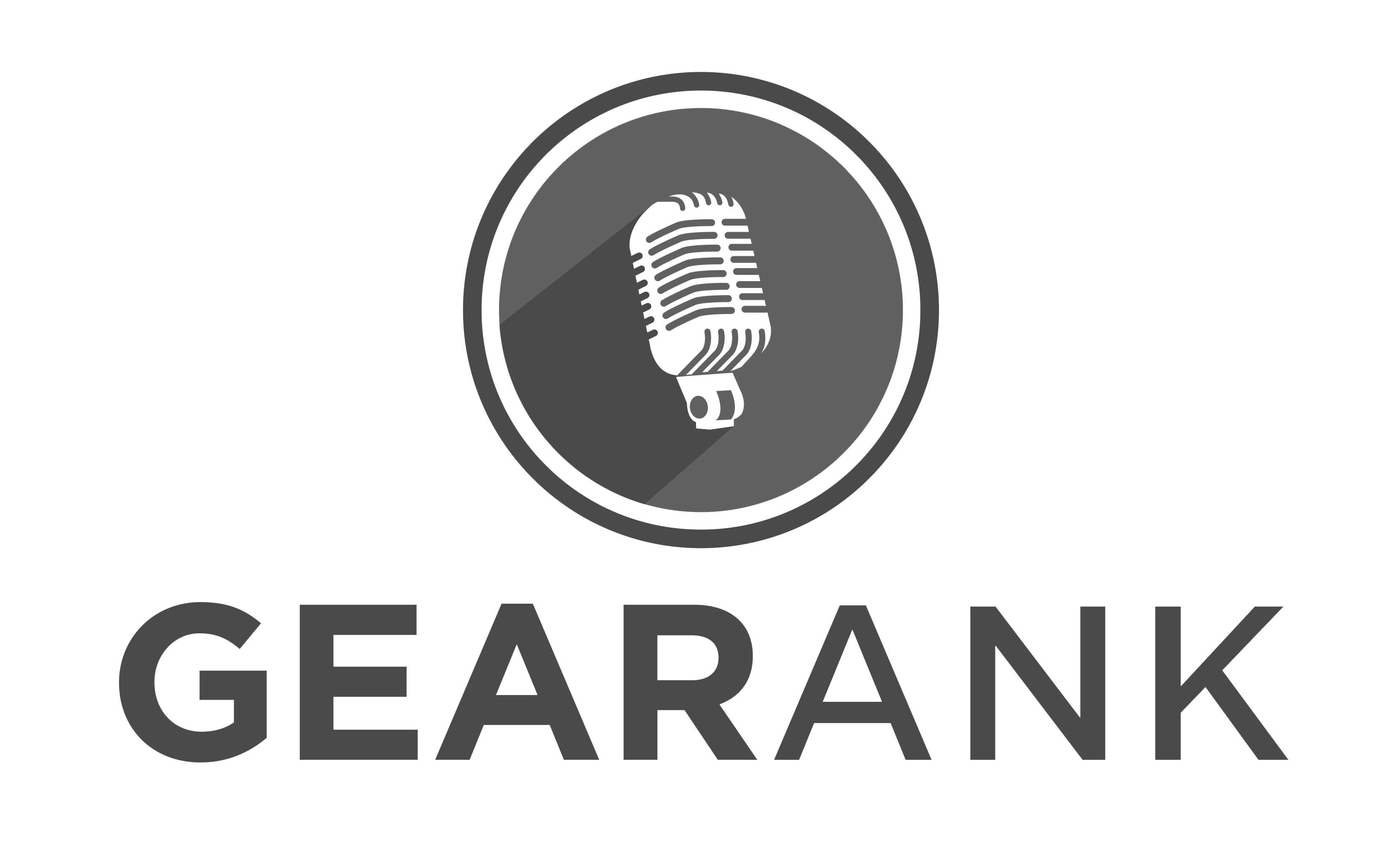
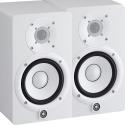
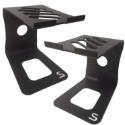
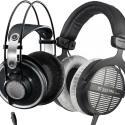
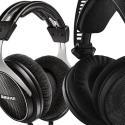

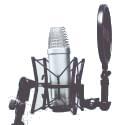
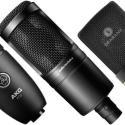
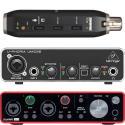
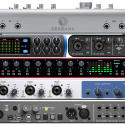
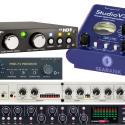

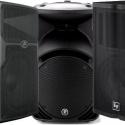
The following subs came off our recommended list when we published the November 2022 Edition:
Publication of our October 2021 Edition resulted in the following subwoofers coming off the recommended list above:
Our November 2020 update resulted in the ADAM Audio Sub8 coming off the recommended list above.
As a result of our November 2019 update the following subs came off our recommended list above but you can still read our analysis of them:
Thanks for the great content!
The following subwoofer was removed from our recommendations above when we updated this guide in February 2018: Behringer Nekkst K10S.
Today we removed the Mackie MR10Smk3 from the recommendations above due to a lack of availability. You can still read our Mackie MR10Smk3 Meta Review.